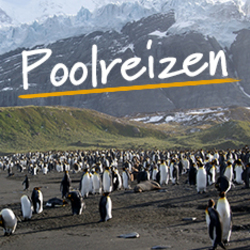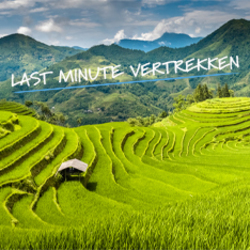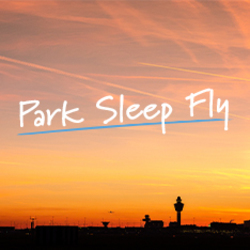Sawadee de nummer 1 in Groepsreizen en Avontuurlijke Reizen
Activities
- Wildlife Holidays
- Marine Wildlife
- Birdwatching
- — Stay in the Napo Wildlife Centre, a community-owned lodge within the UNESCO Biosphere of Yasuni National Park — Visit parrot clay licks, explore the lake by dug-out canoe and walk through primary rainforest — Seven nights aboard a catamaran exploring the Galapagos Islands - a maximum of 16 clients on board — Snorkel with iridescent fish, playful Sea lions and turtles — Fantastic on-board service with experienced naturalist guide
Food
-
1
Start Quito
The adventure begins in Quito, aim to arrive at the hotel this afternoon/evening. Free transfers are available for all clients. A local guide will welcome you to Quito and explain the schedule for the next few days. Accommodation: Hotel Casona de la Ronda (or similar)
-
2
Quito city tour
We have a half-day city tour of Quito, one of the smaller and more attractive of the capitals of South America - 2,850m high in the western cordillera of the Andes. Quito is the second highest capital in the world, and as always at altitude, it is a good idea not to do anything too strenuous at first! We explore the colonial centre with its narrow streets and hanging balconies. The tour usually includes the Independence Plaza, flanked by the Presidential and the Archbishop palaces as well as La Compañia Church with its impressive gold leaf decorations. A short drive brings us to El Panecillo Hill for a panoramic view of the city and to admire the 45m high statue of the ‘Virgen de Quito’, the only original Madonna with wings. Please note that entrance fees are not included. Accommodation: Hotel Casona de la Ronda (or similar)
-
3
Fly to Coca; canoe excursion to Napo Wildlife Centre
Transfer to Quito airport this morning for a 40-minute flight from Quito to Coca. A short drive takes us to the dock where we board a large, motorized canoe for a two-hour ride down-stream. At the entrance to the Napo Wildlife Centre reserve, we transfer to smaller, paddled dug-out canoes so as not to disturb the wildlife. This paddle can take anywhere from 1 to 3 hours depending on what sightings we have (we may have the chance to spot Giant otters, along with monkeys and countless bird species including toucans, parrots, and macaws). The final part of the journey involves crossing the spectacular Anangu Lake and arriving at the lodge to receive a welcome drink and briefing. Accommodation: Napo Wildlife Centre
-
4
Two days at the Napo Wildlife Centre
Spend the next two days at the Napo Wildlife Centre (NWC). Choice and flexibility are key at the lodge but hopefully the following information should give you a good idea of what to expect. Rather than fixed programmes, the guide will design the most suitable schedule to match the groups physical condition and personal interests. Early starts are necessary in order to maximise our wildlife viewing opportunities. NWC has one of the best parrot clay licks in Ecuador, located around one hour from the lodge. We aim to arrive at the lick before the parrot activity kicks off fully at around 7-8am. The lodge also has a 36m-canopy tower, which offers a fantastic insight into the various vertical layers of the jungle and their inhabitants. Spider monkeys frequent the higher canopy searching for fruit and the panoramic view from the top is magnificent, as is the bird viewing. Numerous trails from the lodge offer hikes amongst the primary rainforest and we will head out during the day to learn about the trees and the forest and at night in search of caiman and other nocturnal creatures. Naturally, exploring the lake and creeks by dug-out canoe is a highlight and one of the best ways to see larger animals. Accommodation: Napo Wildlife Centre
-
6
Fly to Quito
Return to Quito the same way we arrived - paddled canoe down the creek, motorised canoe back up the river to Coca and then a short drive to the airport for the flight to Quito. Accommodation: Hotel Casona de la Ronda (or similar)
-
7
Discover Quito at your leisure
We include a free day in Quito to allow time for any delays coming back from the rainforest. An optional excursion to the cloud forest can be organised for this day at the start of the tour. Accommodation: Hotel Casona de la Ronda (or similar)
-
8
Fly to Baltra Airport on the Galapagos and visit Bachas beach
Morning: Fly to Galapagos Transfer to Quito Airport and fly to Baltra Airport in the Galapagos Islands. Upon arrival, you pass through the airport inspection point to make sure no foreign plants or animals are introduced to the island, and to pay the national park entrance fee. Your guide will meet you, help you collect your luggage and escort you on a short bus ride to the harbour where a dinghy will take you to the yacht. Afternoon: Bachas Beach (Santa Cruz) This is a lovely bay with soft, white coral sand frequently visited by egg-laying sea turtles – watch your step! After enjoying leisure time at the beach, you could explore a small lagoon hidden behind bushes, where occasionally it is possible to observe flamingos, black-necked stilts and whimbrels. You might also see rusty barges, which were abandoned here after the Second World War when the USA rented this island as a strategic point to protect the Panama Channel from Japan. Accommodation: Archipel I
-
9
Genovesa Island
Morning: Prince Philip's Steps Genovesa has a royal touch. Follow in the footsteps of Prince Philip – who admired the Galapagos for many years – and visit this favourite birding spot, home to the largest breeding colonies of red-footed and nazca boobies and short-eared owls, which hunt on foot. Afternoon: Darwin Bay One of the outer islands and among the most exclusive spots on the Galapagos, Genovesa is well worth last night's longer navigation. This compact site displays the varied coastal ecosystems of the Galapagos in miniature – nearly too much for a single day. Accommodation: Archipel I
-
10
Bartolomé and Santiago
Morning: Bartolomé This tiny volcano islet is just recently born out of fire. Enter its wild setting of spatter cones and craters and admire beautiful panoramas of the Galapagos. Afternoon: Sullivan Bay (Santiago) Sullivan Bay is incomparable to any other site; setting foot on the recently solidified lava flow is like walking on the moon. Accommodation: Archipel I
-
11
Santa Cruz Island
Morning: El Chato Reserve – Twin Craters El Chato Reserve is a protected area and part of the Galapagos National Park, extending from Cerro El Chato as far down as the southwestern coast of Santa Cruz Island. Afternoon: Fausto Llerena Breeding Center On a tour of the Fausto Llerena Breeding Center, you can see the tortoises of Española Island, ending in the tortoise exhibit corral. Tortoises of this corral are accustomed to humans – an excellent chance to capture a photo for your wall back home. Accommodation: Archipel I
-
12
Floreana Island
Morning: Cormorant Point and Devil’s Crown The peninsula of Cormorant Point forms the extreme north cape of Floreana, which exists out of smaller volcanic cones, covered by a tropical dry forest of palo santo. At the landing beach, you will be welcomed by a small Galapagos sea lion colony. The green sand on this beach contains a high percentage of glassy olivine crystals, which have been blown out by the surrounding tuff cones. The flour-sand beach on the southern side of the peninsula is made of even finer white-coral sand, which feels very smooth on the feet. Parrotfish have pulverised it, grinding the calcareous skeletons of living coral. You can spot schools of stingrays who love the sandy bottom to hide. During the first months of the year, Pacific green turtles come ashore to bury their eggs. Devil’s Crown is one of the best snorkelling spots in the Galapagos due to the coral reef in its centre, which attracts a lot of marine life. Here you can spot Galapagos penguins, sea lions, sea turtles, many different colourful fish and even dolphins. The current can be a bit strong sometimes, so it should not be attempted by novice swimmers. Afternoon: Post Office Bay and Baroness Lookout Historically, this site was the location of a wooden barrel placed by an 18th-century whaling ship crew; letters placed inside were collected and delivered by sailors returning home. Tourists still leave thousands of letters here today and many still reach their destination. You can also relax on the beach at Post Office Bay, where you may see Galapagos sea lions, Pacific green turtles, golden rays and Galapagos penguins (this is the only place in the southeastern archipelago where penguins reside). You can also climb Baroness Lookout, a small basaltic cone, and enjoy paradisiacal views of the coastline. This viewpoint was the favourite spot the eccentric baroness and self-proclaimed Empress of Galapagos, Eloisa von Wagner, who was one of the first settlers on Floreana. Accommodation: Archipel I
-
13
Española Island
Morning: Osborn Islet and Gardner Bay The striking white beach at Gardner Bay is an important breeding site for Pacific green turtles. However, without a doubt, its main attraction is the Galapagos sea lion colony. Females stay year-round in this nursery, suckling their pups until they are three years' old, although they start to fish at five months. During the breeding and mating season, the colony becomes even bigger. Afternoon: Suarez Point The west tip of Española is a dream for birdwatchers and photographers. Feel as though you're within an exciting nature documentary and hike a short distance from colourful marine iguanas. Accommodation: Archipel I
-
14
San Cristobal Island
Morning: Pitt Point Two wind-sculpted tuff cones at Pitt Point constitute the easternmost end of the Galapagos and were the first sight of land for the crew of Darwin’s HMS Beagle. Afternoon: Witch Hill Enjoy a leisurely afternoon in Witch Hill's crescent-shaped beach of soft powdery sand. Accommodation: Archipel I
-
15
Disembark San Cristobal; fly to Guayaquil and end
Morning: Lobos Islet (San Cristobal) and Transfer to San Cristobal Airport The Lobos Islet’s beach harbours a colony of Galapagos sea lions. As in other colonies in the archipelago, you can approach nurturing females within a few metres. In the breeding season, this colony is also visited by territorial males, defending and mating the harem on their part of the beach. This low islet is home to more than just Galapagos sea lions, two other emblematic species breed here: male blue-footed boobies and great frigate birds who try to impress the females (and tourists) with clumsy dances, heaving their striking blue feet or blowing up their balloon-sized scarlet pouches. Assisted by the naturalist guide and some crew members, the dinghy will bring you and your luggage to San Cristobal, where we take the airport shuttle. From here, we fly to Guayaquil where it's possible to connect with international flights from 6pm onwards.



































